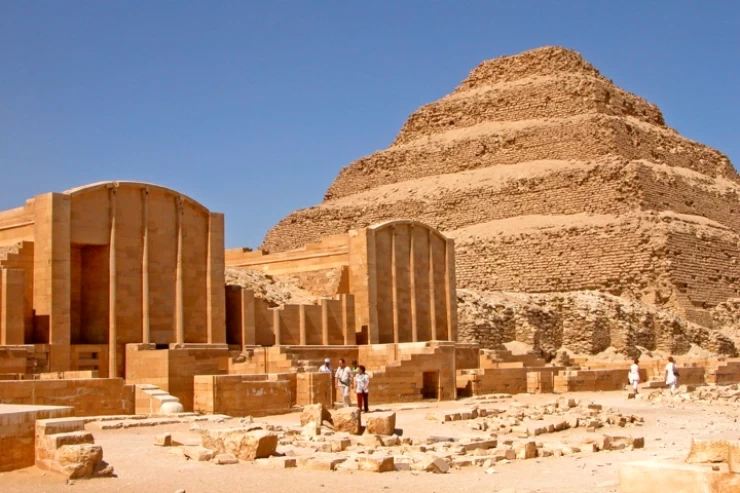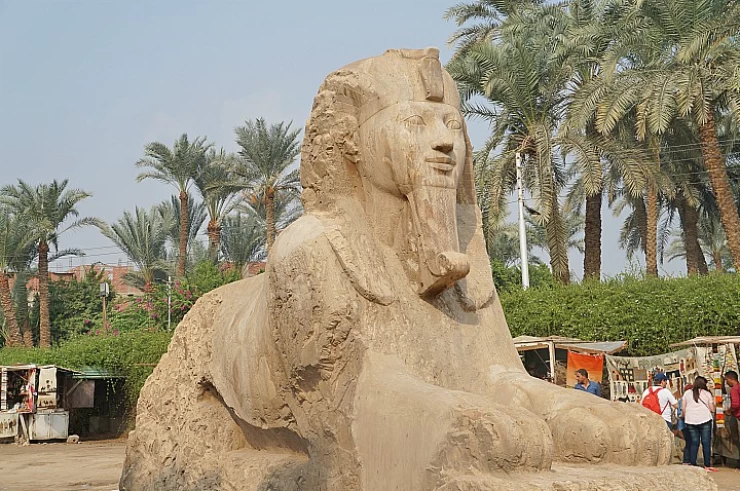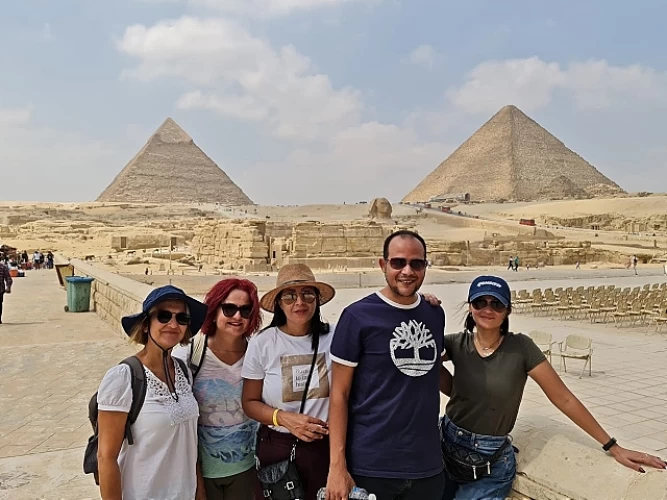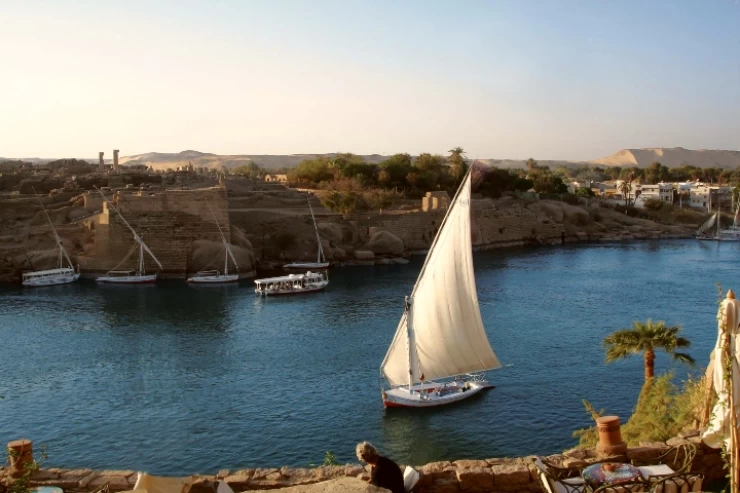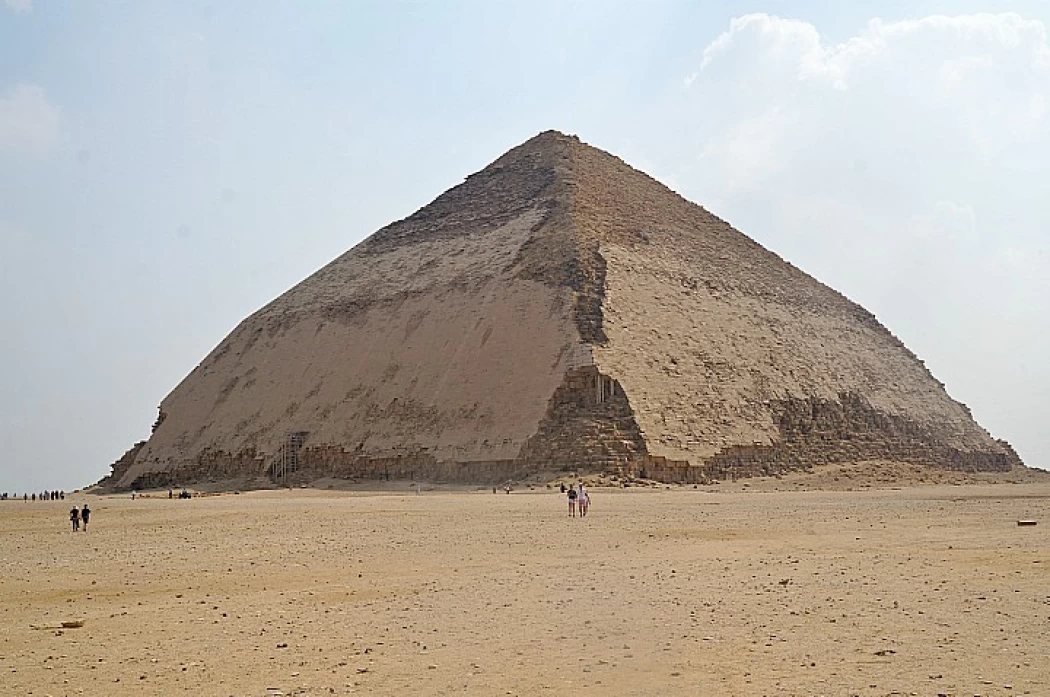
Археологическая зона Дахшур

Дахшур расположен примерно в 40 километрах к юго-западу от Каира и является одним из необычных мест в Каире, которые не подвергаются сильному давлению со стороны обычных однодневных экскурсий по Каиру, в южном конце обширного поля пирамид, которое начинается в Гизе. Раскопки в Дахшуре показали нам остатки семи пирамид, а также комплексы гробниц, построенных для цариц и знати от Мемфиса до 13-й династии Среднего царства.
Последние две пирамиды, построенные в Дахшуре, были окончательно разрушены разрушительным воздействием времени, например, Черная пирамида (12-я династия) сильно повреждена.
Дахшур - родина двух наиболее хорошо сохранившихся пирамид Египта. Обе они были построены во время правления царя Снеферу, основателя 4-й династии, Бент-пирамида и Красная пирамида в Дахшуре считаются массивным свидетельством архитектурного развития, которое в конечном итоге привело к строительству Великой пирамиды царя Хеопса и пирамид его коротких преемников в Гизе.
Согнутая пирамида - первая из пирамид Дахшура, построенная при царе Снеферу. Это была первая попытка древних египтян построить пирамиду с гладкими гранями, но из-за просчетов в распределении обтесанных камней угол пирамиды получился неправильным, поэтому она и называется "Согнутая пирамида", эта пирамида так и не была использована царем, который сразу же приступил к другому амбициозному плану.
Посетив Дахшур, вы не просто потратите время на фотографирование, у туристов будет доступ к обоим оставшимся захоронениям царя Сенфру, красной и изогнутой пирамиде.
Царь Снефру приказал построить вторую пирамиду Дахшура, Красную пирамиду, учась на своих ошибках. После завершения строительства пирамида считалась удачной, так как была полностью построена, имела гладкие грани и поднималась на высоту (104 метра). Название Красной пирамиды происходит от ее красного известняка. Считается, что она является местом упокоения царя Снеферу.
Сразу же после смерти царя Снеферу его сын Хуфутовас изготовил третью пирамиду, на наследство от которой была построена Великая пирамида Гизы, одно из семи чудес света.
Было найдено несколько гробниц царственных женщин, расположенных рядом с пирамидой 12-й династии, содержащей большое количество ювелирных изделий (высшая стадия металлообработки в Египте в этот период времени). Пирамида Сенусрета III с меньшими пирамидами царских женщин. Вокруг пирамид Дахшура были обнаружены массивные кладбища чиновников Старого и Среднего царства. Во время правления царя 12-й династии Аменемхата II царским некрополем Египта был Дахшур.
Se você quiser saber mais sobre How The Great Pyramids Were Built? | Myth Of The Pyramids e ver como elas são, há um site no qual você pode aprender muito sobre elas e ver fotos. Ele também informa como as grandes pirâmides foram construídas e compartilha histórias sobre elas. Isso o ajudará a aprender mais sobre Gizé e seu passado.
Dahshur Archeological Site, known to most, is situated on the Western bank of the Nile River, about 40 kilometers to the south of Greater Cairo, where it appears to draw less of the public’s attention compared to many of Egypt’s ancient sites. This exceptional site, which is less packed than the Giza Plateau, allows for a more personal understanding of the evolution of ancient Egyptian architecture. With some of the oldest and most distinct pyramids in the nation, Dahshur is proof of architectural innovation that used to exist before the making of the Great Pyramid.
The relative tranquility that Dahshur offers enables visitors to view these impressive edifices in a much more comfortable manner without falling into the unpleasant crush of other more popular attractions. Let us explain why this fascinating place should be included in your Egyptian tour program.
A Brief History of Dahshur
The relevance of Dahshur back to the Early Dynastic period, that is, the 4th Dynasty (circa 2613–2589 B.C.E.), during the reign period of Pharaoh Sneferu, who was the first ruler of the Old Kingdom of Egypt and Khufu’s father, the great pyramid builder at Giza. Known for his innovation in building structures, the Egyptian Pharaoh can be said to have used dahshur as his laboratory for the construction of pyramids.
This region has several pyramids, such as the bent pyramid and the red pyramid, both built for Sneferu the King of Egypt in the 4th Dynasty. Their shapes are quite interesting and differ from each other, resembling the stages of pyramid-building that developed to produce the famous pointed pyramids standing on the Giza plateau.
Near the Bent Pyramid is located the Red Pyramid, which is also a creation of Sneferu’s and is generally accepted as the earliest real smooth-sided pyramid ever built. This pyramid is named after the tinge of red that its limestone blocks have and is the third largest pyramid in Egypt with a height of 105 meters. Certainly impressive.
The Bent Pyramid may be said to be the best-known structure in Dahshur, and there is a good reason for this. The peculiarities of this pyramid lie in its shape that curves like a bend, with a miniature upward angle curve occurring at the halfway mark. It was first designed as a real pyramid with sharp surfaces at its sides, but the angle was changed halfway through the construction, most probably for the fact that there was a problem with the structure.
The Bent Pyramid rises in height to 104 meters and is sheathed in white limestone, which is largely well-preserved, giving a clear picture of what pyramids would have looked like when they were constructed. In the last few years, the Bent Pyramid has been the subject of much activity, and visitors have been allowed to view its inner chambers and labyrinth of passageways. Within, there are two tombs connected by a small hall lined with walls of limestone that still show the marks made by the chisels of the workers at the time.
a feat of engineering and a testament to the mastery of ancient Egyptian builders.
The Red Pyramid is notable for its nearly perfect smooth sides and the precision of its construction. Visitors are permitted to enter the pyramid and explore its interior, which includes a long descending passageway leading to three burial chambers. The pyramid’s acoustics and the faint scent of ancient stones lend a mystical atmosphere to the experience, offering an almost ethereal glimpse into Egypt’s distant past.
In addition to the pyramids erected by Sneferu, Dahshur further contains the Black Pyramid of Amenemhat III, which dates back to the Middle Kingdom period. Even though age has not spared this particular building, with its appearance now likened more to a dark, ruined lump than a pyramid, it still stands as an interesting relic of the architectural creativity that characterizes the area. In the first instance, the Black Pyramid was made with limestone and was buried in dark mud bricks, hence the background. It is believed the pyramid was built as a tomb for Pharaoh Amenemhat III, but it was not used for this purpose because it became unstable.
The Dahshur Necropolis: A Rich Tapestry of History
Dahshur's archaeological wealth is not limited to its pyramids. It is a very rich site that features a large cemetery filled with tombs, burial shafts, and other ancient structures that assist in understanding the ancient Egyptians’ views towards death. Many objects have been found on this site by archaeologists too, such as pots, ornaments, and instruments, some of which are kept in the Egyptian Museum in Cairo.
Dahshur in recent years was the subject of a number of archaeological campaigns that aimed at learning more about the area. The excavations opened more tombs and found more articles, which illustrated the way of life of the individuals who were born and buried within these grand constructions.
Accessibility and Location Dahshur is reachable by vehicle for a brisk one-day tour from Cairo. Most of the travelers traveling to Dahshur also make a visit to the neighboring areas of Saqqara and Memphis to make it a day full of ancient Egyptian history. The site is easily reached by car, and there are also organized tours that include transportation and a knowledgeable guide.
Tickets and entry fees are charged to these ancient wonders.
The introduction fee to enter the Dahsur site is quite minimal compared to that of the already congested pyramids at Giza. Entry is allowed not only to the Bent Pyramid but also to the Red Pyramid, enabling them to see the outside and the inside of these two ancient structures.
Best Time to Visit I think the most appropriate time for a tourist to visit Dahshur is in the cooler months of Egypt, which are from October to April. This is the season when there is moderate scenery that makes the exploration of the outdoor site and the climbing of the pyramids inside very interesting. Early visits are best to prevent exposure to excessive heat around noon and to have the site in low attendance.
What to Bring Light clothing and good walking shoes are advised as touring Dahshur involves a bit of walking and the inside of the pyramids is sometimes sloping steeply. Carry water and sun cream and preferably a torch if you are going to the chambers inside the pyramids because they are not always well-lit.
Guided Tours A visitor to Dahshur can, however, decide to visit the area without a guide, but it is highly recommended that an experienced guide be hired. A visitor may not only learn the history and importance of the pyramids and the site from the guide but also learn how to move within the pyramids themselves.







